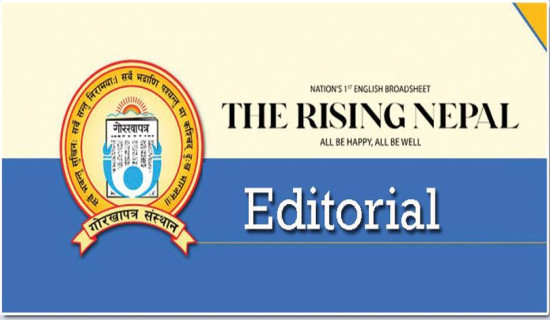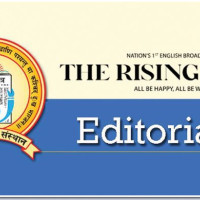- Wednesday, 7 May 2025
Budgets Of Local Levels
With the new fiscal year commencing soon, it has been a very crucial period for all the three-tier governments as they have remained busy preparing a policy document and budget. As per the constitutional provision, the federal government unveiled its budget for the upcoming fiscal year 2023-24 on Jestha 15 in the Nepali calendar while provincial budgets were announced on June 16. There is a statutory provision for provinces to present their budgets at least one month before the start of next fiscal year. The federal and provincial legislatures have now been discussing budgets. Almost all local governments have made their budget public for the coming fiscal year on Sunday. The national charter requires the local levels to unveil their budgets their respective municipal assembly by Asar 10 every year. Barring a few local levels of Sarlahi and some other districts, the local governments, including the five metropolises, across the nation met the legal deadline. Of the total of six metropolises in the country, Birgunj announced its budget some days ago.
Local government budgets are very important as they can directly affect the lives, livelihoods and development aspirations of people. Local government institutions work more closely with the people than the federal and provincial ones. They can contribute meaningfully to making the service delivery system more effective. This, however, does not mean that the federal and provincial governments attach less significance to the people's needs. They have their own jurisdiction in the federal system of governance. Local government budgets provide the framework for public resources to be spent. According to a news report published in this daily on Monday, the Kathmandu Metropolitan City (KMC) unveiled the biggest budget of Rs. 25.54 billion among all local levels nationwide. The KMC has set aside Rs. 16.93 billion for the capital expenditure while Rs. 8.61 billion has been allocated for recurrent expenditure. By earmarking a higher chunk of its budget, the capital metropolis has laid much focus on infrastructure, education, health, and heritage conservation.
Under the 'Metropolitan Pride Project', the KMC has selected altogether 10 projects of the distinct sectors and allocated Rs. 3.8 billion for them. It has set aside Rs. 2 billion for the Metropolitan Golden Project. Similarly, the Pokhara Metropolitan City has introduced a budget of Rs. 7.15 billion. It has reduced the budget size for the upcoming fiscal year as compared to the current one. The metropolis has allocated Rs. 2 billion for infrastructure development, Rs. 65 million for social development, Rs. 100 million for economic development, Rs. 100 million for health, Rs. 180 million for education and Rs. 700 million for tourism, urban development and environment. Likewise, the Lalitpur Metropolitan City has unveiled a budget of Rs. 6.55 billion for the next fiscal year, according priority to durable infrastructure, preservation of arts, culture and heritage and promotion of tourism.
Meanwhile, the Bharatpur Metropolitan City has announced a budget of Rs. 6.31 billion, with its focus on urban infrastructure, agriculture and livestock development, health, education and tourism. The Biratnagar Metropolitan City has divulged Rs. 3.28 billion budget for the coming fiscal year. This budget is Rs. 894 million less than the budget of the current fiscal year. This metropolis has also prioritised creation of infrastructure, education, health, social reform, environment conservation and waste management, entrepreneurship development and employment generation. The Birgunj Metropolitan City has announced a budget of Rs. 3.21 billion. This budget is smaller by Rs. 12 million than that of the current fiscal year. Once the local level budgets are implemented in a desired manner, they are expected to bring about tangible changes in the people’s lives.

















